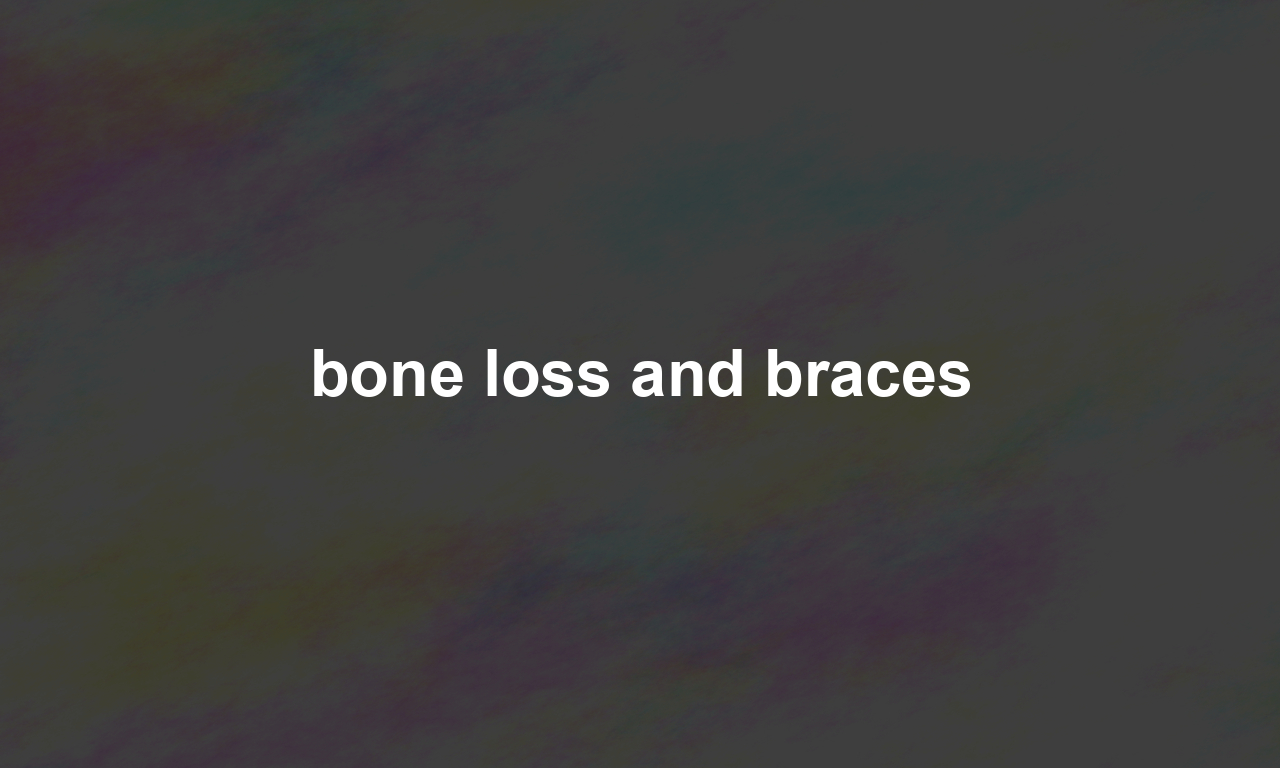Imagine you’re on a journey to fix your smile with braces, but along the way, you encounter a twist in the road: bone loss. Understanding how braces interact with your bone health is crucial for a successful orthodontic journey. Let’s dive into the fascinating interplay between bone loss and braces, exploring its causes, prevention tips, and what you can do to ensure a healthy and beautiful smile.
What Causes Bone Loss During Orthodontic Treatment?
One common question people have is, how can braces lead to bone loss? Braces work by applying continuous pressure on your teeth, guiding them into their new positions. This pressure can sometimes lead to an imbalance in the natural process of bone remodeling – where old bone is broken down, and new bone is formed. If the bone breakdown process outpaces bone formation, bone loss can occur.
Factors Contributing to Bone Loss
Several factors can influence your risk of bone loss while wearing braces:
- Excessive Force: If the orthodontic force applied is too great, it can accelerate bone resorption.
- Inflammation: Poor oral hygiene can lead to gum inflammation, increasing the risk of bone loss.
- Underlying Conditions: Osteoporosis or other medical conditions affecting bone health can exacerbate bone loss.
- Genetics: Your genetic makeup can also play a role in how your bones respond to orthodontic treatment.
Recognizing Signs of Bone Loss
It’s essential to be aware of the signs of bone loss so you can seek timely intervention. Here are some indicators to watch for:
- Loose Teeth: If your teeth feel loose or unstable, it could be a sign of underlying bone loss.
- Receding Gums: Your gums may appear to pull away from your teeth, exposing more of your tooth.
- Difficulty Chewing: Bone loss can make chewing and biting uncomfortable or even painful.
- Visible Spaces: New gaps between your teeth could indicate changes in bone structure.
Preventing Bone Loss with Braces
Preventing bone loss requires a proactive approach from both you and your orthodontist. Let’s explore some tips to minimize the risk:
Maintain Excellent Oral Hygiene
Brushing and flossing are your best defense against gum disease, which can lead to bone loss. Ensure you brush twice a day and floss daily. Consider using mouthwash to eliminate bacteria that your toothbrush might miss.
Regular Dental Check-Ups
Routine visits to your dentist allow for early detection of any potential issues. Your dentist can spot signs of gum disease or bone loss before they become more severe.
Nutrition and Bone Health
Consuming a diet rich in calcium and vitamin D supports bone health. Foods like dairy products, leafy greens, and fortified cereals can provide these essential nutrients. You might also explore other sources of calcium and vitamin D to bolster your diet.
Avoid Harmful Habits
Steering clear of smoking and excessive alcohol consumption can greatly benefit your bone health. Both habits are known to negatively impact bone density and overall oral health.
Orthodontist’s Role in Managing Bone Health
Your orthodontist plays a pivotal role in safeguarding your bone health during braces treatment. They can adjust the force applied to your teeth and monitor the progress closely to mitigate risks of bone loss.
Customized Treatment Plans
Your orthodontist will create a tailored treatment plan considering your specific bone health needs. This personalized approach ensures that the pressure on your teeth is just right – enough to move them without causing damage.
Technological Tools
Modern orthodontics employs advanced tools and techniques, such as 3D imaging, to closely monitor bone structure and health. These tools allow for more precise adjustments and less likelihood of bone loss.
What To Do If Bone Loss Occurs
If you experience bone loss, don’t panic; several methods can address it effectively.
Bone Grafting
In some cases, a procedure called bone grafting may be necessary. This involves transplanting bone tissue to areas where bone loss has occurred, helping regenerate new bone growth.
Medication
Certain medications can aid in preventing further bone loss and promoting bone density. Consult with your healthcare provider for appropriate medical treatment options.
Gum Treatments
If gum disease is a contributing factor to bone loss, treatments like deep cleaning (scaling and root planing) or other periodontal treatments might be recommended.
Conclusion
Navigating the journey of braces and ensuring your bone health remains intact is a multi-faceted process. By maintaining excellent oral hygiene, having regular dental check-ups, and following your orthodontist’s guidance, you can significantly reduce the risks of bone loss. Remember, early intervention and attentive care can lead to a healthier, more beautiful smile.
For more in-depth information about bone health, check out this comprehensive guide on WebMD. Additionally, the Mayo Clinic offers thorough insights on osteoporosis and bone health.
Keep smiling and take good care of your teeth and bones!

